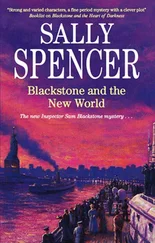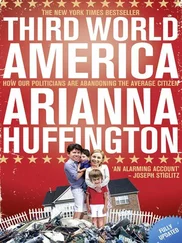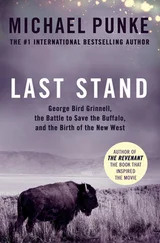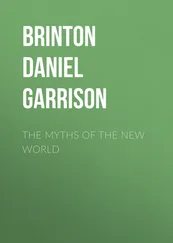But that’s not at all what she had said: her words were being misrepresented so that her message might be more easily attacked. “She was referring to the complacency of the ratings agencies and investment advisers who say there is nothing to worry about,” said a person at 60 Minutes who reviewed the transcripts of the interview for me, to make sure I had heard what I thought I had heard. “She says there is something to worry about, and it will be apparent to everyone in the next twelve months.”
Whatever else she had done, Meredith Whitney had found the pressure point in American finance: the fear that American cities would not pay back the money they had borrowed. The market for municipal bonds, unlike the market for U.S. government bonds, spooked easily. American cities and states were susceptible to the same cycle of doom that had forced Greece to seek help from the International Monetary Fund. All it took to create doubt, and raise borrowing costs for states and cities, was for a woman with no standing in the municipal bond market to utter a few sentences on television. That was the amazing thing: she had offered nothing to back up her statement. She’d written a massive, detailed report on state and local finances, but no one except a handful of her clients had any idea what was in it. “If I was a real nasty hedge fund guy,” one hedge fund manager put it to me, “I’d sit back and say, ‘This is a herd of cattle that can be stampeded.’”
What Meredith Whitney was trying to say was more interesting than what she was accused of saying. She didn’t actually care all that much about the municipal bond market, or how many cities were likely to go bankrupt. The municipal bond market was a dreary backwater. As she put it, “Who cares about the stinking muni bond market?” The only reason she had stumbled into that market was that she had come to view the U.S. national economy as a collection of regional economies. To understand the regional economies, she had to understand how state and local governments were likely to behave; and to understand this she needed to understand their finances. Thus she had spent two unlikely years researching state and local finance. “I didn’t have a plan to do this,” she said. “Not one of my clients asked for it. I only looked at this because I needed to understand it myself. How it started was with a question: how can GDP [gross domestic product] estimates be so high when the states that outperformed the U.S. economy during the boom were now underperforming the U.S. economy—and they were twenty-two percent of that economy?” It was a good question.
From 2002 to 2008, the states had piled up debts right alongside their citizens’: their level of indebtedness, as a group, had almost doubled, and state spending had grown by two-thirds. In that time they had also systematically underfunded their pension plans and other future liabilities by a total of nearly $1.5 trillion. In response, perhaps, the pension money that they had set aside was invested in ever-riskier assets. In 1980 only 23 percent of state pension money had been invested in the stock market; by 2008 the number had risen to 60 percent. To top it all off, these pension funds were pretty much all assuming they could earn 8 percent on the money they had to invest, at a time when the Federal Reserve was promising to keep interest rates at zero. Toss in underfunded health care plans, a reduction in federal dollars available to the states, and the depression in tax revenues caused by a soft economy, and you were looking at multi-trillion-dollar holes that could only be dealt with in one of two ways—massive cutbacks on public services or a default—or both. She thought default unlikely, at least at the state level, because the state could bleed the cities of money to pay off its bonds. The cities were where the pain would be felt most intensely. “The scary thing about state treasurers,” she said “is that they don’t know the financial situation in their own municipalities.”
“How do you know that?”
“Because I asked them!”
All states may have been created equal, but they were equal no longer. The states that had enjoyed the biggest boom were now facing the biggest busts. “How does the United States emerge from the credit crisis?” Whitney asked herself. “I was convinced—because the credit crisis had been so different from region to region—that it would emerge with new regional strengths and weaknesses. Companies are more likely to flourish in the stronger states; the individuals will go to where the jobs are. Ultimately, the people will follow the companies.” The country, she thought, might organize itself increasingly into zones of financial security and zones of financial crisis. And the more clearly people understood which zones were which, the more friction there would be between the two. (“Indiana is going to be like, ‘NFW I’m bailing out New Jersey.’”) As more and more people grasped which places had serious financial problems and which did not, the problems would only increase. “Those who have money and can move do so,” Whitney wrote in her report to her Wall Street clients, “those without money and who cannot move do not, and ultimately rely more on state and local assistance. It becomes effectively a ‘tragedy of the commons.’”
The point of Meredith Whitney’s investigation, in her mind, was not to predict defaults in the municipal bond market. It was to compare the states to each other so that they might be ranked. She wanted to get a sense of who in America was likely to play the role of the Greeks, and who the Germans. Of who was strong, and who weak. In the process she had, in effect, unearthed America’s scariest financial places.
“So what’s the scariest state?” I asked her.
She only had to think for about two seconds.
“California.”
AT SEVEN O’CLOCK one summer morning I pedaled a five-thousand-dollar titanium-frame mountain bike rented in anxiety the previous evening down the Santa Monica beach road to the corner where Arnold Schwarzenegger had asked me to meet him. He turned up right on time, driving a black Cadillac SUV with a handful of crappy old jalopy bikes racked to the back. I wore the closest I could find to actual bicycle gear; he wore a green fleece, shorts, and soft beige slipperlike shoes that suggested both a surprising indifference to his own appearance and a security in his own manhood. His hair was still vaguely in a shape left by a pillow, and his eyelids drooped, though he swore he’d been up for an hour and a half reading newspapers. After reading the newspapers, this is what the former governor of California often does: ride his bike for cardio, then hit the weight room.
He hauls a bike off the back of the car, hops on, and takes off down an already busy Ocean Avenue. He wears no bike helmet, runs red lights, and rips past DO NOT ENTER signs without seeming to notice them, and up one-way streets. When he wants to cross three lanes of fast traffic he doesn’t so much as glance over his shoulder but just sticks out his hand and follows it, assuming that whatever is behind him will stop. His bike has at least ten speeds but he has just two: zero, and pedaling as fast as he can. Inside half a mile he’s moving fast enough that wind-induced tears course down his cheeks.
He’s got to be one of the world’s most recognizable people, but he doesn’t appear to worry that anyone will recognize him, and no one does. It may be that people who get out of bed at dawn to jog and Rollerblade and race-walk are too interested in what they are doing to break their trance. Or it may be that he’s taking them by surprise. He has no entourage, not even a bodyguard. His economic adviser, David Crane, and his media adviser, Adam Mendelsohn, who came along for the ride just because it sounded fun, are now somewhere far behind him. Anyone paying attention would think, That guy might look like Arnold but it can’t possibly be Arnold because Arnold would never be out alone on a bike at seven in the morning, trying to commit suicide. It isn’t until he is forced to stop at a red light that he makes meaningful contact with the public. A woman pushing a baby stroller and talking on a cell phone crosses the street right in front of him, and does a double take. “Oh . . . my . . . God,” she gasps into her phone. “It’s Bill Clinton!” She’s not ten feet away but she keeps talking to the phone, as if the man is unreal. “I’m here with Bill Clinton.”
Читать дальше












